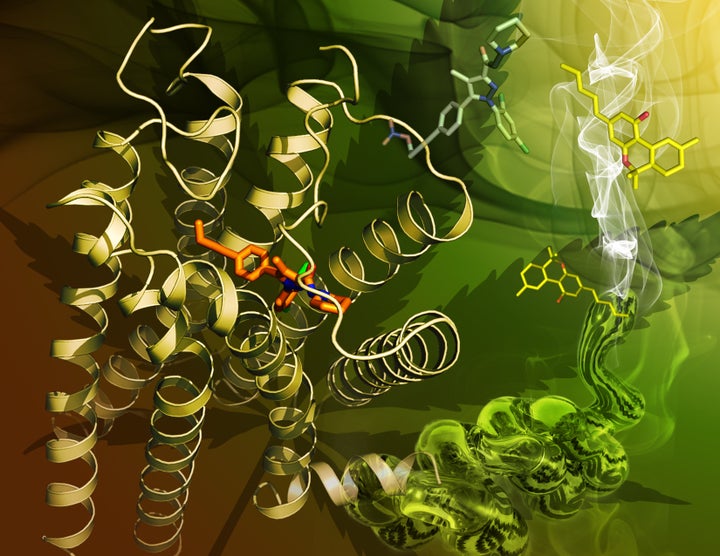Scientists still don’t know the whole story of how marijuana makes people high. But they’ve just taken a big step forward in our understanding of pot’s effect on the human body by figuring out the three-dimensional structure of cannabinoid receptor 1 (CB1).
CB1 is the large protein molecule in nerve cells that is activated by marijuana’s main mind-altering constituent, tetrahydrocannabinol (THC), spurring the cellular processes that lead to the euphoria and other effects familiar to pot smokers.
In addition to yielding a better understanding of marijuana’s mind-altering effects, knowing the ins and outs of CB1’s complex structure (see illustration below) could speed development of drugs for conditions ranging from pain and inflammation to obesity and substance abuse.

“We found that the CB1 receptor consists of multiple sub-pockets and channels,” Dr. Alexandros Makriyannis, director of Northeastern University’s Center for Drug Discovery and a member of the international team of researchers who mapped CB1, said in a press statement. “This complex structure will allow chemists to design diverse compounds that specifically target portions of the receptor to produce desired effects.”
Or, as Makriyannis told HuffPost Science in a telephone call, “We found the ‘home’ of THC, but that ‘home’ can be inhabited by other molecules that can do other things.”
The achievement, detailed in a paper published Oct. 20, 2016, in the journal Cell, could also help scientists understand why synthetic cannabinoids like K2 and Spice can cause severe and potentially life-threatening reactions.
These reactions, which include vomiting, suicidal thoughts and violent behavior, have led to an increase in calls to poison control centers in recent years.
To figure out the 3D structure of CB1, the scientists first chemically treated the molecule to turn it into crystalline form. Then they analyzed it via a technique known as X-ray crystallography ― the same technique used to determine the structure of DNA and many other important biomolecules.
Makriyannis said the researchers had obtained funding to continue the research, with the goal of learning more about CB1 and how it is affected by other compounds.

